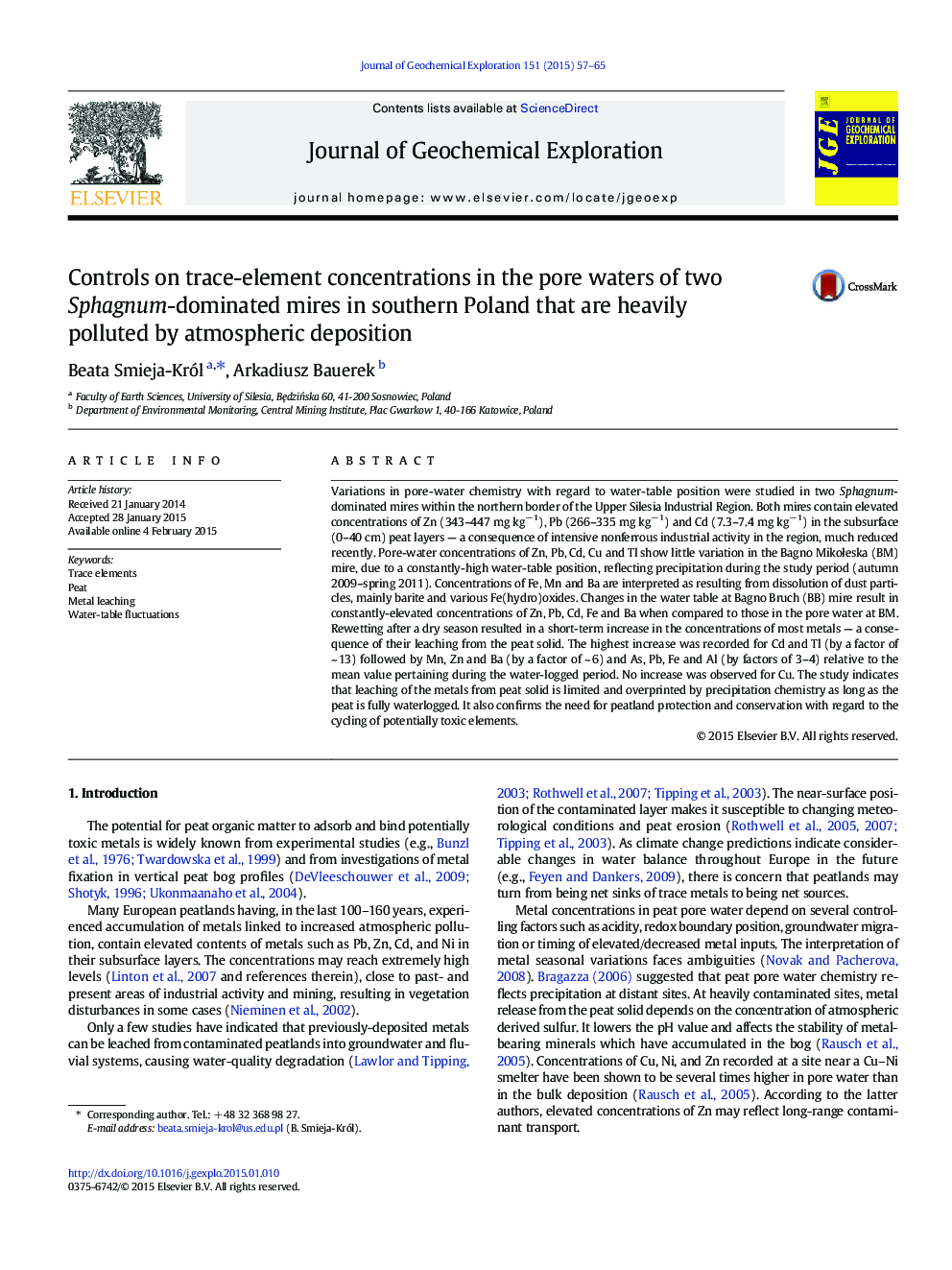| Article ID | Journal | Published Year | Pages | File Type |
|---|---|---|---|---|
| 4457169 | Journal of Geochemical Exploration | 2015 | 9 Pages |
•Pore-water chemistry was studied with regard to water-table position in two mires.•The composition of pore water depends on precipitation in fully waterlogged mires.•Water table lowering in mire results in increase of trace elements in pore water.•The concentration of Fe, Mn, Ba and As relies on dust-deposited particle dissolution.
Variations in pore-water chemistry with regard to water-table position were studied in two Sphagnum-dominated mires within the northern border of the Upper Silesia Industrial Region. Both mires contain elevated concentrations of Zn (343–447 mg kg− 1), Pb (266–335 mg kg− 1) and Cd (7.3–7.4 mg kg− 1) in the subsurface (0–40 cm) peat layers — a consequence of intensive nonferrous industrial activity in the region, much reduced recently. Pore-water concentrations of Zn, Pb, Cd, Cu and Tl show little variation in the Bagno Mikołeska (BM) mire, due to a constantly-high water-table position, reflecting precipitation during the study period (autumn 2009–spring 2011). Concentrations of Fe, Mn and Ba are interpreted as resulting from dissolution of dust particles, mainly barite and various Fe(hydro)oxides. Changes in the water table at Bagno Bruch (BB) mire result in constantly-elevated concentrations of Zn, Pb, Cd, Fe and Ba when compared to those in the pore water at BM. Rewetting after a dry season resulted in a short-term increase in the concentrations of most metals — a consequence of their leaching from the peat solid. The highest increase was recorded for Cd and Tl (by a factor of ~ 13) followed by Mn, Zn and Ba (by a factor of ~ 6) and As, Pb, Fe and Al (by factors of 3–4) relative to the mean value pertaining during the water-logged period. No increase was observed for Cu. The study indicates that leaching of the metals from peat solid is limited and overprinted by precipitation chemistry as long as the peat is fully waterlogged. It also confirms the need for peatland protection and conservation with regard to the cycling of potentially toxic elements.
